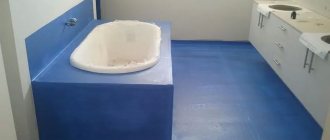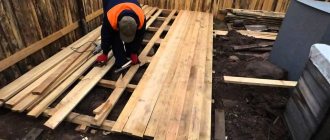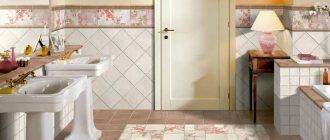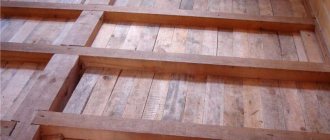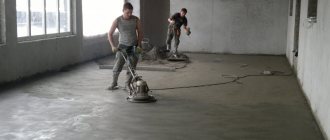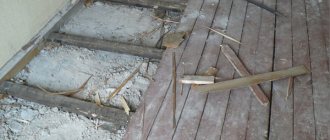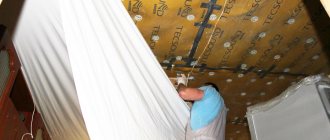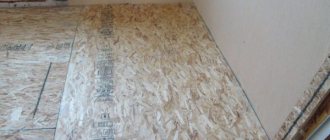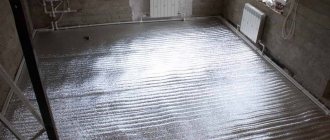| Place | Name | Characteristics in the rating |
| TOP 10 best materials for soundproofing floors |
| 1 | Technoelast Acoustic | Best sound insulation performance with thin material thickness |
| 2 | Penotherm NPP LE | High environmental friendliness |
| 3 | Isoplat | Environmentally friendly material |
| 4 | Vibration stack-V300 | Better noise reduction performance |
| 5 | Texound | The most innovative sound insulation |
| 6 | Felt | Affordable price |
| 7 | Extruded polystyrene foam | The most popular material. Attractive price |
| 8 | SCHUMANET | Fire resistance. Environmental Compliance |
| 9 | Cork | The most natural material for sound insulation |
| 10 | Maxforte Shumoizol | The best ratio of material thickness to sound insulation level |
Soundproofing the floor in an apartment is an essential component of the comfort of housing. It is no secret that in an apartment building (especially those built in the era of socialism) the sound insulation indicator leaves much to be desired.
This review presents the best materials for floor sound insulation available on the domestic market. The rating is based on noise-absorbing characteristics, ease of installation, cost and environmental friendliness. The opinions of sound insulation specialists and the successful experience of various owners who used one of these materials to improve their homes were also taken into account.
Soundproofing substrates
This group of building products allows you to increase the insulating properties of the coating in a panel house without completely dismantling existing structures. Due to their small thickness, the materials do not cause the floor level to rise above the permissible level. Depending on the type of finishing layer, acceptable height, and acoustic characteristics of the substrate, a product with suitable parameters is selected.
Roll and slab substrates based on natural cork are popular. In addition to environmental friendliness, durability, and immunity to moisture, they successfully combine low thermal conductivity with the ability to absorb acoustic vibrations. A tangible result is achieved by using modern multi-layer products, for example, a felt coating reinforced with a polymer base.
Natural cork backing.
Cheap and relatively effective materials include substrates made of soft wood-fiber boards; despite the name, the material is not subject to deformation, maintaining its original thickness under load, which allows it to be used under type-setting and panel parquet and laminated coverings. The choice of soundproofing substrates in the retail chain is significant; manufacturers are constantly expanding their range of products, but when purchasing them, one must not forget that, despite advertising promises, the capabilities of thin materials are limited, although often sufficient.
Sealing seams and joints
If in new buildings the problem is the poor quality of filling joints, then in old houses this is compounded by cracks resulting from deformations and displacement of elements. These defects allow sounds to pass through structures freely. A sound insulation device without eliminating through gaps will not provide confidence in the final result, since the protective layer will be insufficient.
If work is carried out on a bare floor base, then you should carefully evaluate the joints between the panels and the interface lines of the wall panels and the ceiling. If cracks or chips are detected, the cement or other sealing filling is removed to the base material, and the resulting void is filled with polyurethane foam or non-hardening construction sealant.
Treatment of joints and cracks in floor panels.
When improving the properties of the existing coating when performing repairs without completely dismantling the base, it is recommended to open it along the perimeter to the base, fill the joint with sealant and cover it with a cement-sand screed under the level. Sometimes they do not pay attention to the passages of pipelines through the floor panels located in the bathrooms and kitchen. By eliminating through gaps around them, they reduce the penetration of sounds and uncontrolled air exchange, which is a source of extraneous odors and affects the microclimate of the premises.
Conclusion
An integrated approach, specialized materials and correct installation are the key to long-awaited peace of mind. It is almost impossible to completely eliminate extraneous noise, but the proposed solutions will help reduce their level to a comfortable minimum.
On the topic, it is useful to read material about local sound insulation of the ceiling. Decorative noise-absorbing panels will help to muffle irritating sounds somewhat. The video is about a house using LSTK technology, in which everything is in order with sound insulation.
Subscribe to our Telegram channelExclusive posts every week
Membrane sound insulation of floors in a wooden house along the ceiling
The technology of membrane soundproofing of house floors appeared recently, but has already managed to gain popularity due to its quality, efficiency and reliability, which is good news. The technique was developed not by specialists, but by ordinary people who tried to think through all the details and test it in practice.
Sound insulation of beam floors is created using mineral or basalt wool, which combines not only strength, but also lightness, making all the work not difficult to complete. Acoustic material is available in a wide range, so you can always choose the best quality and most practical option.
@Derevyanniidom
The advantage of acoustic wool is that it has a high level of sound absorption, so even the largest sound waves will be muffled without inconvenience to residents.
Installation of a membrane sound absorber
The “pie” of sound insulation requires careful attention not only to the choice of raw materials, but also to compliance with technological features, since this is the only way to count on practicality and ease of subsequent use. It is important to consider the following points:
- Initially, a frame is created with relatively small cells, where sound insulation is installed. It is important to mount it not only on top of the beams, but also between them.
- And after this, plasterboard is installed, which not only acts as a membrane, but also creates space for the subsequent decoration of the ceiling covering.
Tips for obtaining high-quality sound insulation
To perform high-quality sound insulation, you must follow the following recommendations:
- If communications are laid underground, they must be insulated with elastic material.
- Having decided to soundproof the floor, to obtain a high-quality result, it is recommended to insulate other surfaces, walls and ceilings.
- It is recommended to fasten skirting boards only to the floor or to the wall so that they do not serve as a noise bridge. Under no circumstances should it be attached to a beam.
- When choosing a soundproofing material, you should not skimp. It is necessary to choose the best option in terms of reliability and durability. Request a quality certificate for the product from the seller to prevent the purchase of counterfeits or low-quality material.
- All wood used for floor installation must be treated with antiseptic substances to prevent rotting and fungal damage.
Wood processing
- If questions arise during the work, it is better not to be shy and ask for advice from specialists in order to find the right solution taking into account the characteristics of the room.
- For better sound insulation, it is recommended to lay the material in two layers.
- Since each material has its own functionality, you can combine them. For example, lay the first layer of wool with basalt fibers, and the second - glass wool. In this case, there is no need to lay a waterproofing layer, since wool with basalt fibers has this quality.
Selection of materials
The modern building materials market offers a considerable variety of products that are excellent for sound and noise insulation of floors in any apartment. Each of them has its own advantages and is more effective in certain cases. Taking into account the positive feedback from users, the following are the most popular materials.
cotton wool
Made from mountain raw materials. All products are divided into basalt, mineral, and glass wool. The difference between them is insignificant. The main characteristics (both positive and negative) of such building materials are similar.
Pros:
- low thermal conductivity;
- high fire safety;
- good vapor permeability;
- does not absorb dust;
- significant resistance to biological effects;
- easy installation.
Minuses:
- A layer with a thickness of more than 10 cm is considered effective;
- requires careful installation, any deformations are unacceptable;
- shrinks over time;
- under the influence of moisture it loses its properties.
Advice! Any type of cotton wool is not recommended for use in rooms with excessively high levels of humidity.
Mineral wool insulation from different manufacturers differs in characteristics and does not always have the same composition Source ursgroup.ru
Cork panels
Made from special wood. In this case, veneer or small chips are used. The latter is carefully pressed, then combined into sheets under high temperatures. This material is more suitable for protecting premises from external impact noise.
Advantages:
- ease;
- high strength;
- resistant to moisture;
- small thickness;
- easy to install;
- Chip panels are cheap.
Among the significant disadvantages of cork sheets, only one is highlighted - low soundproofing efficiency.
Cork soundproofing panels are made from the top (keratinized) layer of cork oak bark Source mir-probki.com.ua
Expanded polystyrene
Consists of small granules that contain air. Thanks to them, effective sound suppression occurs. Such characteristics of the material allow it to be used for high-quality sound insulation.
Pros:
- moisture resistant;
- provides the created structure with strength;
- characterized by a long service life;
- biologically stable;
- safe (non-toxic).
Minuses:
- fragile (more suitable for ceiling sound insulation).
- To ensure sufficient efficiency, a thick layer of material (more than 15 mm) is required.
Helpful information! To absorb 24 dB of impact noise, it is necessary to use polystyrene foam boards, the thickness of which is approximately 2 cm.
Extruded polystyrene foam is characterized by much better soundproofing qualities than simple foam. Source budmagazin.com.ua
Soundproofing membrane
This is a relatively thin, but at the same time heavy acoustic substrate. It consists of durable fibers, polymers, and binders.
Advantages:
- small thickness;
- good elasticity and flexibility;
- significant density;
- there is a self-adhesive base;
- easily cut into required parts;
- absorbs sound well;
- serves for a long time.
Flaws:
- is not cheap;
- It is unacceptable to lay it on an uneven base; it must first be leveled with plaster.
Due to the small number of disadvantages, soundproofing membranes are increasingly gaining leadership among similar products.
Soundproofing membranes are a thin polymer coating with the addition of bitumen and rubber Source stroy-podskazka.ru
How to reduce discomfort from an elevator operating behind a wall
vlad11111FORUMHOUSE Member
Please help. I bought an apartment: a brick house, built in 2004, with a single entrance (thick walls) ceilings - reinforced concrete slabs. The house has 9 floors, there is a technical floor, an apartment on the 5th floor. The joy of shopping is overshadowed by the noise of the elevator, it is right behind the wall of the corridor. It’s not that it’s completely impossible to live, but it’s really annoying because you’re not used to it. There are even more sounds of the elevator turning on and braking, such loud “blows”. Now, if you do (and what kind of) noise insulation of the wall from the elevator along the entire length and the ceiling in the entire corridor - will this change the situation? Or are these noises transmitted along the walls and dancing with soundproofing is useless? Neighbors on the other side of the building say they can't hear the elevator. I am ready for financial expenses and reducing the width and height of the corridor.
Acoustic Group specialist recommends the following.
Noise from elevator equipment is transmitted structurally through the building structure. For this reason, there is little point in soundproofing individual structures (in particular the wall in the corridor).
Try to discuss with the management company the possibility of implementing vibration isolation measures and adjusting elevator equipment to eliminate noise transmission at the source.
If this is not possible, you will have to do comprehensive sound insulation of either the entire apartment or a separately selected room (ceiling and walls). The ZIPS III Ultra system is suitable for this.
And frame cladding of the ceiling and walls, consisting of materials:
- Shumanet-SK Neo slabs;
- Suspensions Vibroflex-Connect PP;
- Sheet covering - double gypsum fiber board, gypsum board, thickness from 12.5 mm, for soundproofing ceiling cladding.
Plus:
- Sound-absorbing boards Shumanet-SK Neo;
- Sheet cladding with double gypsum plasterboard, gypsum fiber board, thickness from 12.5 mm; for frame wall cladding.
Basic floor soundproofing designs
Soundproofing the flooring in an apartment from lower neighbors can be done in various ways. To choose the most suitable one for yourself, it is worth understanding the intricacies of such work and studying the complex issues.
"Floating" floor
The main difference between this design and an ordinary screed is the absence of contact with the walls. Soundproofing material is placed between them, which subsequently provides effective protection from extraneous sounds. Such a device is created so that impacts on the floor covering are not transmitted to the walls. To create a high-quality floating floor, you can use thermal and sound insulation, a soundproofing membrane, and mineral wool.
Sequencing:
- Thoroughly clean the concrete base of construction debris.
- Carefully apply a layer of primer.
- Place soundproofing material.
- Lay geotextiles on top: its edges should extend onto the wall. This will prevent moisture from entering the previous layer.
- Make a wet or semi-dry screed (at least 6 cm) with preliminary mesh reinforcement. The absence of the latter can lead to a violation of the integrity of the base.
- Lay the underlay (for example, vibroflor), after which you can lay the finishing floor covering.
Sound insulation of the floor can also be done without a cement bonding layer, replacing it with gypsum fiber board or GSP sheets. They are mounted with joints spaced apart, then connected with screws. It is important to coat the contact points of the elements well with sealant.
Advice! Any soundproofing material used must be installed on the walls. After the cement composition has hardened, its excess is cut off, and the cracks are carefully treated with an acoustic sealant.
The main feature of the floating floor design is the absence of a rigid connection between the base and the coating itself Source ciklevka-parketa-cena.ru
